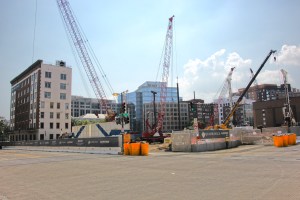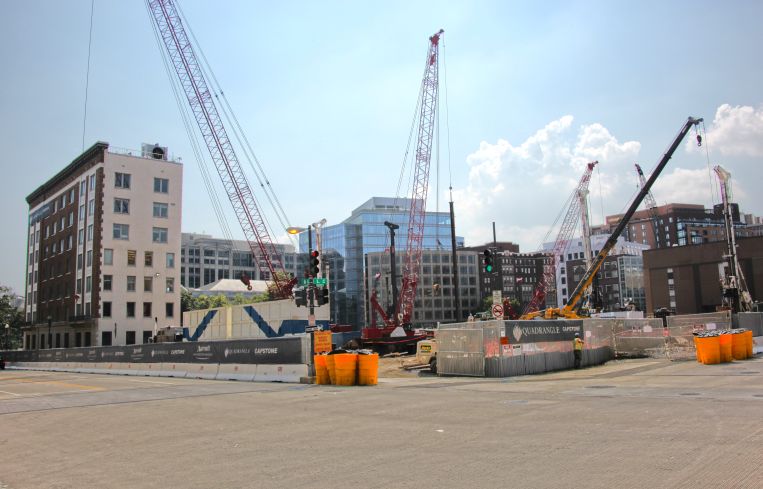 Construction employment is inching closer to pre-recession levels, according to a report by the New York Building Congress released today, in a 4.5 percent increase from 2013 to 2014. But wages remain low as construction costs rise non-union labor becomes more prevalent in the current real estate boom.
Construction employment is inching closer to pre-recession levels, according to a report by the New York Building Congress released today, in a 4.5 percent increase from 2013 to 2014. But wages remain low as construction costs rise non-union labor becomes more prevalent in the current real estate boom.
“A booming market has many, many benefits for the city as a whole, for people that work in the industry, for employment opportunities,” said Richard T. Anderson, the president of the Building Congress, told Commercial Observer. “But it does lead to cost escalation, it does lead to labor shortages.”
There were roughly 121,200 construction jobs in the first three months of this year, up from 119,600 during the same time in 2014.
Employment averaged at 127,600 construction workers in the private sector in 2014, according to the Building Congress, which analyzes state Department of Labor data. That puts construction about 4,000 jobs shy of the peak levels in 2008 before the recession struck the market.
Plumbers, electricians and other specialty workers did the best last year with 3,000 jobs added for a total 83,000, the Building Congress reported.
Heavy construction and civil engineering jobs didn’t fare so well, however, adding 8,400 jobs—down 500 from a year earlier. They’re the highest paid, however, with average salaries hovering around $100,000 per year, according to the Building Congress.
Not the case for the industry as a whole, with speculation that might be a result of the rise of non-union labor. Workers on average brought home $52,300 between January and September 2014 (the freshest data the Building Congress analyzes), which is only $300 more than the same period of 2013.
[protected-iframe id=”fc954b5f8541705ef232697af69b0236-39571588-83377436″ info=”https://docs.google.com/spreadsheets/d/17rIDrJjeMFOFu-i41i7OnkDk-2PJs_ZJVp7KQg0JJRM/pubchart?oid=463416608&format=interactive” width=”545″ height=”448″ frameborder=”0″ scrolling=”no”]When it factored in year-end bonuses, the Building Congress predicted construction workers earned about $73,000 in 2014—the same as the year before.
Mr. Anderson put part of the blame on non-union labor, which has grown in size as construction costs also swell up. While the work might come cheaper, Mr. Anderson said, projects might take longer to complete and not be executed as safely.
“It’s a change in the New York City construction market,” Mr. Anderson told CO. “If the market contracts over the next few years, the question is who will benefit and who will hurt by a somewhat reduced market.”
Union versus non-union labor has become a hot topic in the New York City construction scene; developments like Steinway Tower on West 57th Street and even Hudson Yards will have a considerable amount of work done by non-union labor.
Some union contractors have been working on ways to cut costs on a project in order to attract developers, said Lou Coletti, the president of the Building Trades Employers’ Association, which represents contractors and construction managers. While Mr. Coletti said he couldn’t give specifics, he said that included working on benefits, productivity and working rules.
“There are constant conversations almost project by project about how to get costs down,” he said.




